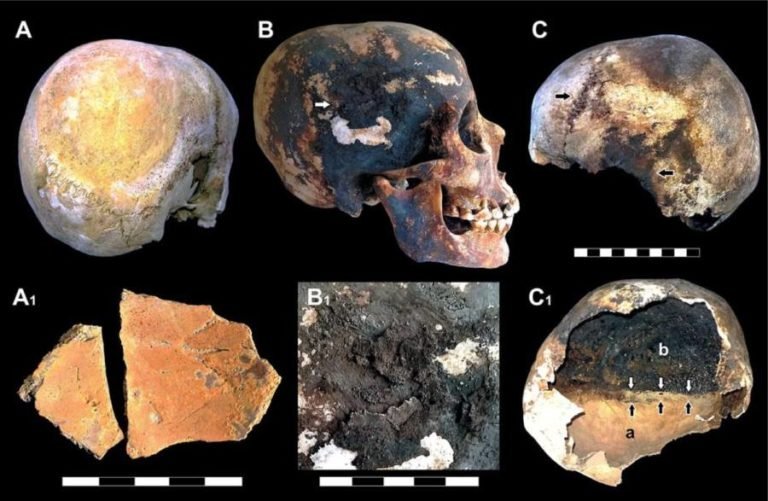“It’s an almost unthinkably gruesome method of death”, a team of researchers puts forward a new theory of “sudden body fluid vaporization” for the victims’ cause of death, and it is just as terrifying as it sounds.

The skulls of the victims showed signs that they were subjected to high heat. It is believed that the 400-900 degree Fahrenheit (200-500 degree Celsius) heat boiled the fluid in the victim’s head causing their skulls to explode and instantly turning their brains to lumps of ash.
In 79 A.D. when Mount Vesuvius erupted, it affected nearby Roman towns of Pompeii and Herculaneum, the eruption launched volcanic ash, gas, and rocks for almost 21 miles, this was not all – molten lava poured out for two days. Those who did not manage to evacuate in time met unfortunate ends. The new research suggests that some of them died more grisly death than others.

The new study published in PLOS One presents evidence that the boathouse victims were killed after the extreme heat of the explosion caused their blood to boil and skulls to consequently explode, not by suffocation of ashfall.
For the new research, Pierpaolo Petrone and his team of the Federico II University Hospital in Naples, Italy examined the skeletons of people who had taken shelter from the eruption in 12 waterfront chambers in the city of Herculaneum, which is located only four miles from the volcano’s mouth.
Among the people who died, there were women, men, children, and at least one pregnant woman, whose 7-month-old fetus bones were found among the bones of her pelvis. The 140 or so people likely died of asphyxiation as toxic gases and fine ash from the pyroclastic flow filled the room.
When they began to analyze they discovered a mysterious red and black residue that coated some of the bones and skulls. Tests on the residue revealed that the residue was high in iron and iron oxide and the residue was found especially on the skulls which suggest “massive heat-induced hemorrhage,” the author wrote in their study in PLOS ONE.
The author added that “star-shaped fractured on some of the skulls likely indicate that the vaporization of blood and brain matter caused the skulls to explode like unpierced baked potatoes in the microwave.”

“The detection of such iron-containing compounds from the skull and the ask filling the endocranial cavity… Strongly suggests a widespread pattern of heat-induced hemorrhage, intracranial pressure increase a bursting most likely to be the cause of the instant death of the inhabitants of Herculaneum,” the study said.
While several skeletons that the team examined had skulls with gaping holes and stains that are consistent with “recurrent skull explosive fracture.”
The researchers said that the victim’s death was sudden, heat-driven death rather than asphyxiation. Most victims on fire assume a “pugilistic pose,” in death, with arms and legs drawn up – as if ready to kick or punch. But the skeletons that were recovered in Herculaneum rarely shows the full pugilistic pose. Petrone and his team wrote, “suggesting that their muscles burned away so quickly that they never had time to contract as in a typical fire death.”
Those who died in Pompeii also died instantly but didn’t go as horrendously as who lived in Herculaneum did, Pompeii was located a couple of miles further from the volcano than Herculaneum.
Pierpaolo Petrone the lead scientist told Newsweek: “In Pompeii, placed about six miles from the vent, the lower temperature of about 250-300 degrees Celsius was sufficient to kill people instantly, but not hot enough to vaporize the flesh of their bodies.”
According to the study, archaeological and volcanological site evidence shows that Mount Vesuvius has a major eruption in every 2,000 years. The last eruption was nearly 2,000 years ago and research points to another catastrophic event sooner than later.
Read more from the website.










